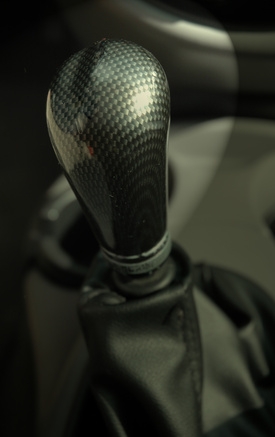
Driving a manual vehicle can save you money. Manual vehicles are often less expensive, achieve better gas mileage and can provide you with better accelerating and braking control. At the same time, learning all the small details about shifting gears can be intimidating. Once you learn to downshift, you're well on your way to extending the life of your brakes (if done properly) and better controlling your acceleration.
Drive in your intended gear. For example, you can stay in fourth-gear at 40 to 45 mph. Get ready to downshift by moving your right hand to the shifter.
Lift your right foot completely off of the gas pedal. Quickly push your clutch in with your left foot and downshift into third gear. Release your foot off of the clutch slow enough that you can feel the cars RPMs increase (which sounds similar to shifting while accelerating), making sure not to release your foot off of the clutch too quickly.
Press your right foot back onto the gas pedal quickly if you still need power, or to the brake pedal if you would like to slow down. While you are engaging the clutch to downshift, your foot should not be on the gas pedal, otherwise you are "riding the clutch," which causes long-term clutch damage. It is okay to use the brakes at the same time if you are trying to slow down.
Continue driving until you need to upshift or downshift again. If you're turning, rather than use the brakes to slow into the turn, slightly press the brake pedal and downshift as explained above. Doing so allows you to come out of the turn with better acceleration rather than with sluggish power. You can achieve the most torque in a vehicle at 3,500 to 5,500 RPM.
Get the most power for accelerating to pass someone by down shifting into high RPMs. For example, driving in fourth-gear at 45 mph and downshifting into third should put you at about 4,000 to 4,500 RPMs, where you can gain better acceleration than at the 2,600 RPMs you were probably at in fourth gear.